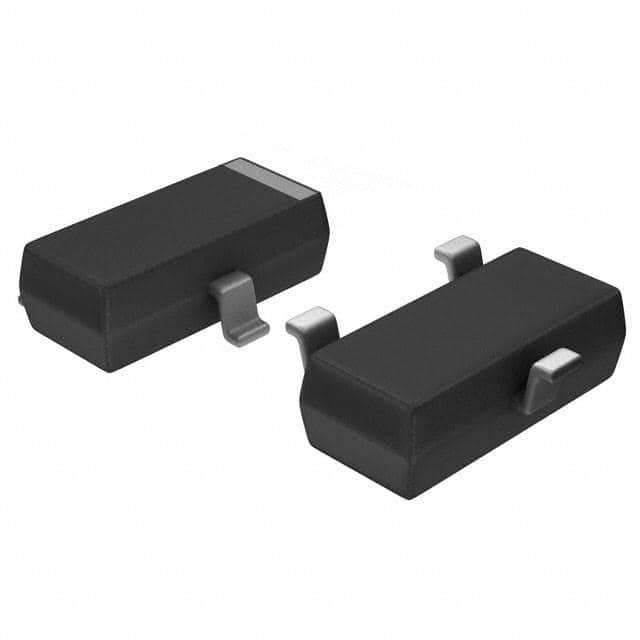Lihat spesifikasi untuk detail produk.

BCW60D Transistor:
Product Overview
The BCW60D transistor belongs to the category of small-signal transistors. It is commonly used in electronic circuits for amplification and switching purposes. The transistor exhibits characteristics such as high current gain, low noise, and low power consumption. It is typically packaged in a small plastic package and is available in various quantities per package.
Specifications
- Maximum Collector-Emitter Voltage: 45V
- Maximum Collector Current: 100mA
- DC Current Gain (hFE): 110-800
- Power Dissipation: 225mW
Detailed Pin Configuration
The BCW60D transistor has three pins: the emitter, base, and collector. The pin configuration is as follows: - Emitter (E) - Pin 1 - Base (B) - Pin 2 - Collector (C) - Pin 3
Functional Features
The BCW60D transistor offers high current gain, making it suitable for use in low-power amplification circuits. Its low noise characteristic makes it ideal for applications where signal fidelity is crucial. Additionally, its low power consumption makes it suitable for battery-operated devices.
Advantages and Disadvantages
Advantages
- High current gain
- Low noise
- Low power consumption
Disadvantages
- Limited maximum collector current
- Relatively low maximum collector-emitter voltage
Working Principles
The BCW60D transistor operates based on the principles of semiconductor physics. When a small current flows into the base terminal, it controls a much larger current between the collector and emitter terminals, allowing for amplification or switching of electrical signals.
Detailed Application Field Plans
The BCW60D transistor finds application in various electronic circuits, including audio amplifiers, signal processing circuits, and low-power switching circuits. Its high current gain and low noise characteristics make it particularly suitable for use in audio amplification applications where signal fidelity is essential.
Detailed and Complete Alternative Models
Some alternative models to the BCW60D transistor include the BCW60A and BCW60C. These transistors offer similar characteristics and can be used as substitutes depending on availability and specific circuit requirements.
In conclusion, the BCW60D transistor is a versatile component with applications in various electronic circuits, offering high current gain, low noise, and low power consumption. Its specifications and functional features make it a valuable asset in the design and implementation of electronic systems.
[Word count: 318]
Sebutkan 10 pertanyaan dan jawaban umum terkait penerapan BCW60D dalam solusi teknis
What is BCW60D?
- BCW60D is a high-power NPN bipolar junction transistor (BJT) designed for use in general-purpose amplifier and switching applications.
What are the key features of BCW60D?
- The key features of BCW60D include a high current gain, low saturation voltage, and high transition frequency, making it suitable for various technical solutions.
What are the typical applications of BCW60D?
- BCW60D is commonly used in audio amplifiers, motor control circuits, LED drivers, and other general-purpose switching applications.
What is the maximum collector current rating of BCW60D?
- The maximum collector current rating of BCW60D is typically around 1A, making it suitable for medium-power applications.
What is the maximum power dissipation of BCW60D?
- The maximum power dissipation of BCW60D is typically around 1W, allowing it to handle moderate power levels.
What is the typical voltage rating for BCW60D?
- The typical voltage rating for BCW60D is around 45V, making it suitable for low to medium voltage applications.
Is BCW60D suitable for high-frequency applications?
- Yes, BCW60D has a high transition frequency, making it suitable for high-frequency switching applications.
Does BCW60D require any special heat sinking or thermal considerations?
- For most general-purpose applications, BCW60D does not require special heat sinking, but it's always good practice to consider thermal management for high-power applications.
Can BCW60D be used in automotive applications?
- Yes, BCW60D can be used in automotive applications such as lighting control, motor drive, and other general-purpose functions.
Where can I find detailed specifications and application notes for BCW60D?
- Detailed specifications and application notes for BCW60D can be found in the datasheet provided by the manufacturer or on their official website.

